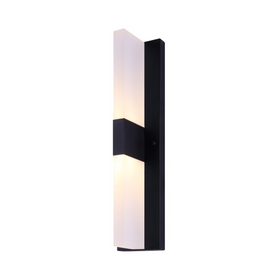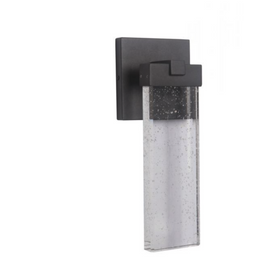- Home

Building smaller also added several sustainability benefits. "Going smaller is more eco-friendly, uses less lumber and materials, and has a smaller footprint, too," Rumsey says. The house is being constructed of milled lumber: yellow pine. "The post and beam construction is built around six yellow-pine telephone poles that we cemented into the ground."
Rumsey and Cee are interested in incorporating recycled and salvaged materials into their homes. For their energy needs, a friend is helping them source second-hand solar panels, which they plan to hook up using Tesla car batteries. While they're having their solar system installed, the couple is renting a small apartment in the nearby village to charge power tool batteries and camera equipment.
Watering Plants, Sustaining People
For their water needs, Rumsey and Cee found an old abandoned well in the jungle by their land. They also have a water collection system from their roof. The house's gutters are hooked up to a 2500- liter tank under the house, which collects runoff also used to water the plants. "We want to install another water tank on the hill behind the house, and will have a gravity-fed shower and water for the bathroom—all from rainwater," Cee says.

"It rains a lot where we live. We have an abundance of water falling from the sky, so to be hooked up to the local water system doesn't make sense to us," he continues. "Being off-grid just makes sense money-wise, but more importantly, it aligns with our beliefs and goals of living as low impact, self-sustainable, and eco-friendly as possible."
Creating an off-grid homestead comes with challenges and difficulties. During their first building trip, Rumsey and Cee were mostly living in the middle of the jungle without shelter while they began building their off-grid home. Because of the rain, they lost about a month's worth of work time. "Being so far out in the wild, there were many days we got stuck at the property in the rain with no shelter and no way to get work done. We just stood around under a bit of tree cover getting wet," Rumsey recalls.
The couple had to cut a path to get to the property. Because of the rain, every truck carrying in materials like wood, gravel, or cement got stuck or broke down on its way to the site. The couple often had to carry in wood and other materials by hand or load it in small batches on a four-wheeler to get it to the building site. Not having power was also challenging at times. They found a generator to run a jackhammer to break up rocks they encountered while digging their foundation holes.
Despite these challenges, the entire process of building an off-grid home has been exciting. "It's fun for us as the off-grid homesteading lifestyle is the exact opposite of what we're used to," Cee says. "The cities are crazy, crowded, lack the nature we love, the schedule is non-stop, and the lifestyle is speedy and hectic. With this new lifestyle, we can finally slow down, enjoy the natural world around us, learn to live off of the land and be an integral part of our natural environment. We love the change of pace."
A Sense of Purpose
Building their own off-grid home also offers the couple a feeling of accomplishment and purpose. "When we're back in the States at our jobs, we don't feel like we are doing anything meaningful, only working for a paycheck," Rumsey says. "Now, we are excited about working, enjoy getting our hands dirty, and love seeing the results and how they are directly benefiting our lives."
"I also love getting to work with my two best friends every day," Rumsey says. "My brother and I have reconnected through the process, and I love spending time with Hannah: building our own home together is special."

For Rise homeowners interested in off-grid living or homesteading, Rumsey and Cee offer these simple words of advice. "With the internet and YouTube, anything you want to do is now possible," Rumsey says, of the vast number of tutorials available online.
"We had no experience with off-grid living before undertaking this project, just the desire to do it," he adds. "Honestly, it hasn't been that difficult. The community of people doing what we're doing is growing. The idea of off-grid homesteading is becoming more popular and more accessible. It makes so much sense. Our advice would be: If you want to do it, there's no reason not to."
You can follow the progress on Tyler and Hannah's beautiful off-grid home and homestead on their YouTube channel or Instagram account.
Tobias Roberts
Tobias runs an agroecology farm and a natural building collective in the mountains of El Salvador. He specializes in earthen construction methods and uses permaculture design methods to integrate structures into the sustainability of the landscape.













